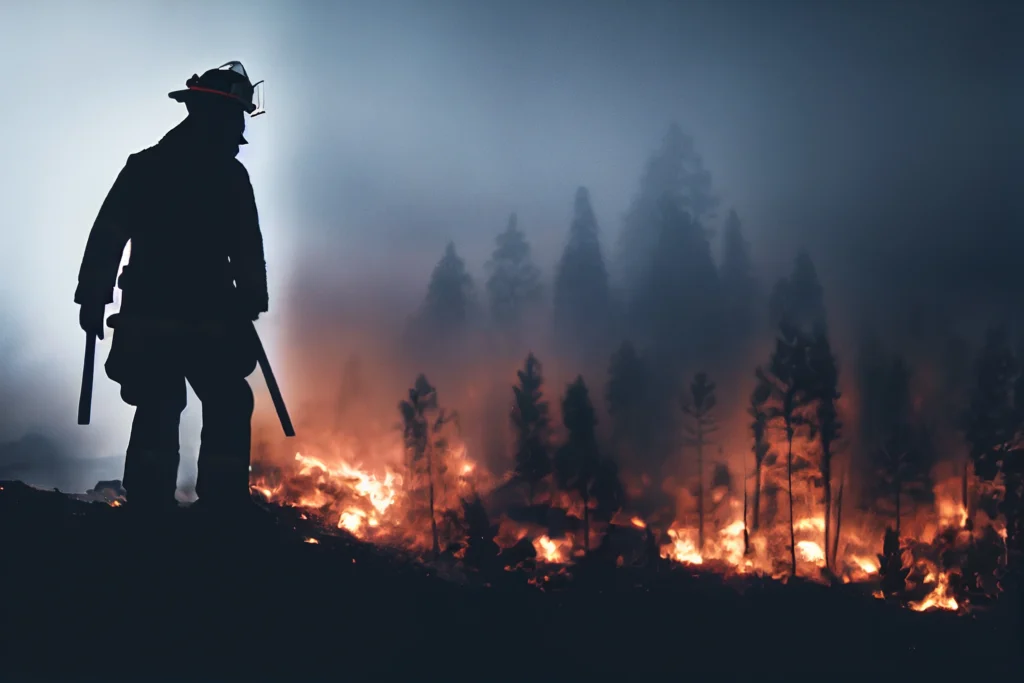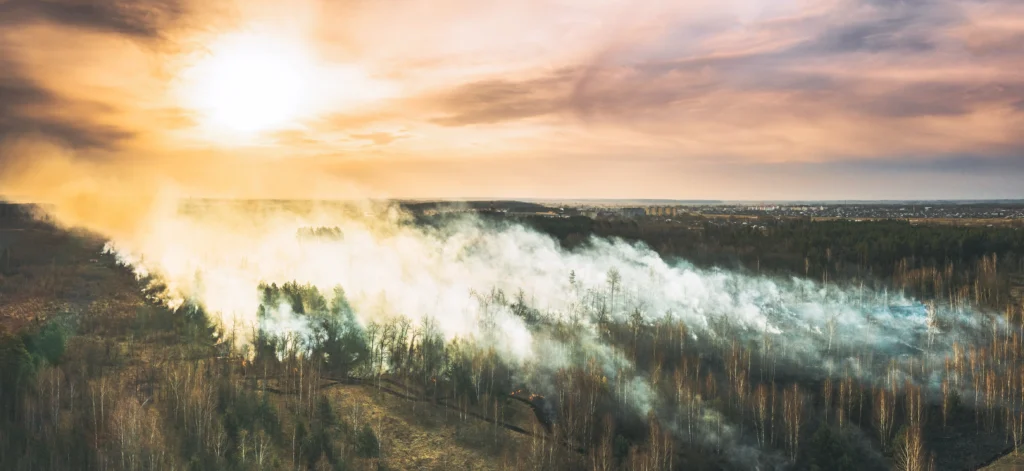California’s wildfire season is no stranger to devastation, but in 2025, the situation has escalated to levels rarely seen before. As a result of extreme heatwaves, drought conditions, and the growing effects of climate change, the state is currently grappling with some of the largest and most catastrophic wildfires in history. These wildfires have not only ravaged communities but have also endangered lives, wildlife, and ecosystems across the Golden State. The year 2025 marks a tipping point in California’s battle against wildfires, and understanding the factors behind this rise, the challenges of fire management, and the potential for future mitigation is crucial for all Californians.

Record-Breaking Fires: The Latest Updates on California’s Wildfire Crisis
As of mid-July 2025, California has experienced over 1.5 million acres scorched by wildfires. With over 30 major fires burning across the state, this year is on track to surpass the devastation witnessed in previous years. The most significant fires include the McKinney Fire in Northern California, which has consumed over 400,000 acres, and the Cedar Hill Fire in Southern California, which continues to threaten both rural and suburban areas. In addition to these, smaller but still dangerous fires have broken out across the state, prompting continuous emergency response efforts.
According to the California Department of Forestry and Fire Protection (CAL FIRE), the fire season began unusually early this year, driven by intense heat waves in late spring. Wildfires have spread quickly due to extremely dry vegetation, high winds, and low humidity—perfect conditions for fire growth. Thousands of people have been displaced, and thousands of homes have been lost to the flames. Over 50,000 residents have already evacuated their homes, and more evacuation orders are expected as the fires show no sign of slowing.

The Role of Climate Change in California’s Wildfire Surge
Climate change has played a critical role in the increasing frequency, intensity, and duration of wildfires across California. While wildfires are a natural part of many ecosystems, scientists now link the extreme wildfire seasons to the broader changes happening in the global climate system.
Rising Temperatures: California has seen a continuous rise in average temperatures over the past few decades, with some regions experiencing temperatures exceeding 130°F. These extreme heat waves dry out vegetation, creating perfect tinder for wildfires. The state’s drought conditions have been persistent for several years, further increasing the flammability of forests, grasslands, and brush.
Changing Precipitation Patterns: The state’s annual rainfall has become more erratic, with wetter-than-usual winters followed by prolonged periods of drought. This fluctuating cycle promotes rapid plant growth, which, in turn, dries out during the drier months, providing ample fuel for fire. These cycles of growth and decay have become more extreme, leading to larger, more volatile fires.
Fire Seasons Becoming Longer: Research from the California Climate Assessment shows that fire seasons in the state have grown significantly longer. What was once a summer threat has now expanded into a year-round concern. By 2050, experts predict that fire seasons will last up to two months longer, putting increasing pressure on firefighting resources, communities, and ecosystems.
California’s Efforts to Tackle the Wildfire Crisis
California has long been proactive in its approach to wildfire mitigation, but the growing scale and frequency of wildfires call for more comprehensive strategies and funding. In 2025, the state has committed over $2 billion to wildfire fighting efforts, with a significant portion dedicated to fire suppression, emergency services, and disaster recovery. This funding includes resources for additional firefighting personnel, air tankers, and bulldozers that are critical in containing large fires.
However, experts agree that firefighting alone is not enough to combat the wildfire crisis. Forest management and controlled burns have been recognized as crucial tools to manage forest density, reduce fuel loads, and decrease the intensity of wildfires. In recent years, the state has stepped up its efforts to address overgrown forests and implement prescribed burns, but these efforts have often faced opposition from environmental groups and local communities, primarily due to the risk involved.
Furthermore, the state’s building codes have been updated to ensure new homes in fire-prone areas are built with fire-resistant materials, such as metal roofing, stone siding, and shatterproof windows. However, with millions of existing homes located in fire zones, retrofitting older buildings remains a significant challenge.

The Impact of Wildfires on California Communities and Wildlife
The impact of wildfires on California communities and wildlife has been devastating. As of the latest reports, nearly 1,000 homes have been destroyed, and many more are at risk. The fires have particularly affected rural communities, as well as those in wildland-urban interface zones—areas where homes are located near forests, brush, or grasslands.
For the residents of these communities, the immediate concerns are safety and evacuation. But the longer-term impacts are also significant. Many families will face months, or even years, of recovery due to the destruction of infrastructure, homes, and businesses. The economic toll of these fires has reached billions of dollars, including lost property, insurance claims, and recovery costs.
Beyond human costs, the fires have wrought immense damage to wildlife and ecosystems. The California Condor, Mountain Lion, and Black Bear populations are all under threat due to habitat destruction. The fires are not just destroying physical homes, but also the natural homes of these species. Some habitats may take decades to recover from the damage caused by these fires, leaving many species vulnerable and displaced.
What You Can Do: Tips for Protecting Your Home and Family
As California residents face another catastrophic wildfire season, it is critical to prepare for potential emergencies. Here are some updated tips for wildfire preparedness to help protect you, your family, and your property:
- Create a Defensible Space Around Your Home:
- Clear away dead vegetation, tree limbs, and other debris. Ensure at least 30 feet of defensible space around your home and 100 feet in areas with steep terrain or dense vegetation.
- Build with Fire-Resistant Materials:
- Upgrade to fire-resistant roofing materials such as metal, clay tiles, or asphalt shingles. Use non-combustible fencing and fire-resistant landscaping to reduce risks.
- Stay Informed and Have an Evacuation Plan:
- Sign up for emergency alerts from CAL FIRE, NIXLE, or your local county’s notification system. Keep your phone charged and have an evacuation kit ready to go. Know multiple routes to safety.
- Consider Insurance and Home Retrofitting:
- Ensure your home insurance covers wildfire damage and includes rebuilding costs. Consider retrofitting your home with fire-resistant windows and doors.
- Participate in Community Fire Preparedness Programs:
- Many communities offer firewise programs, which provide education, resources, and even financial incentives for creating safer, fire-resistant homes and neighborhoods.
Looking Ahead: The Need for Comprehensive Fire Management
While California continues to adapt to the increasing threat of wildfires, experts stress that long-term solutions are crucial. The state’s forest management practices, urban planning strategies, and climate action initiatives must evolve in response to the growing wildfire risk. In particular, focusing on climate change mitigation—such as reducing greenhouse gas emissions and investing in renewable energy—will play a pivotal role in addressing the root causes of California’s wildfire crisis.
As California looks to rebuild and recover from the current wildfire season, residents, businesses, and lawmakers must come together to forge a path toward a more fire-resilient future. With the climate crisis at the forefront, now is the time to adopt bold measures to protect communities, wildlife, and ecosystems from the increasingly severe wildfire seasons ahead.
The 2025 wildfire season in California is a stark reminder of the urgency of climate action, effective disaster preparedness, and community resilience. While the state has made strides in managing and combating fires, much work remains to be done to mitigate the growing threat of wildfires in the coming decades.
Table of Contents
Hazy skies from California fires stretch across Reno and Tahoe